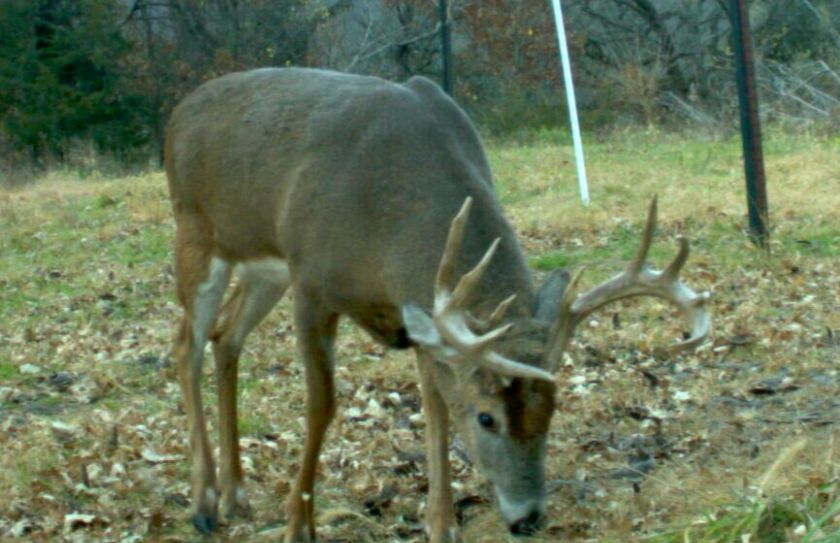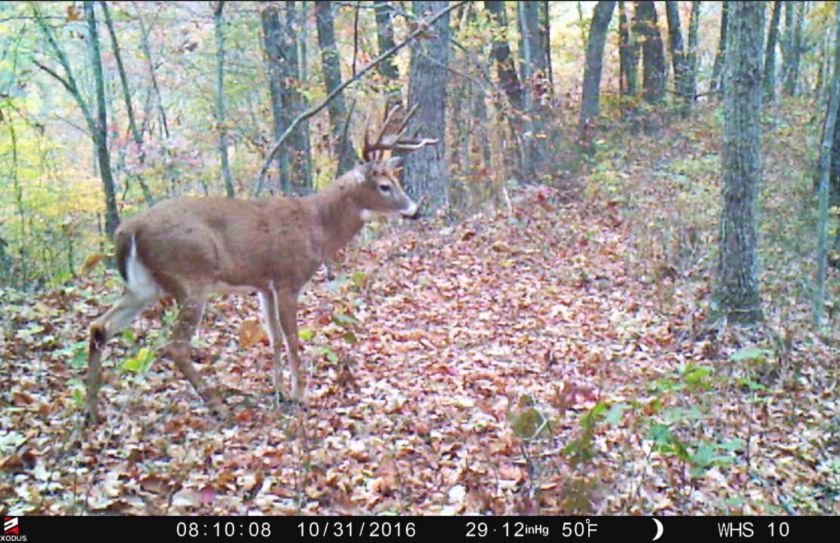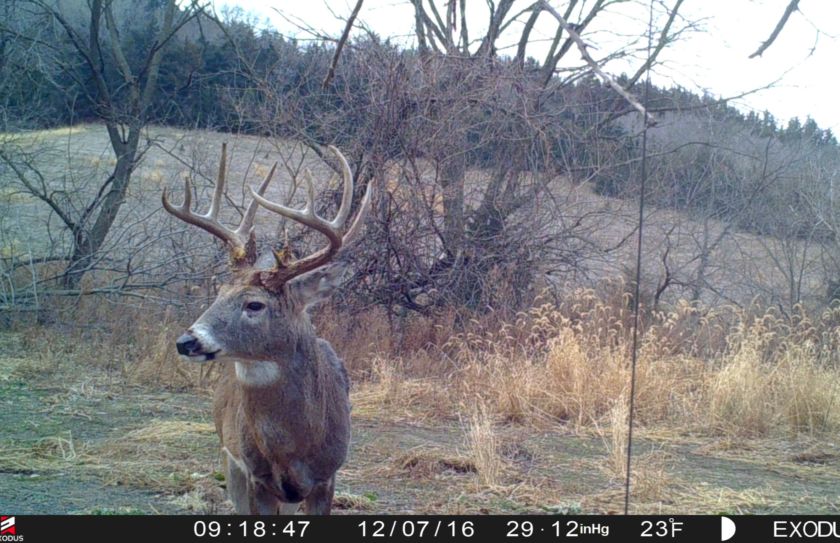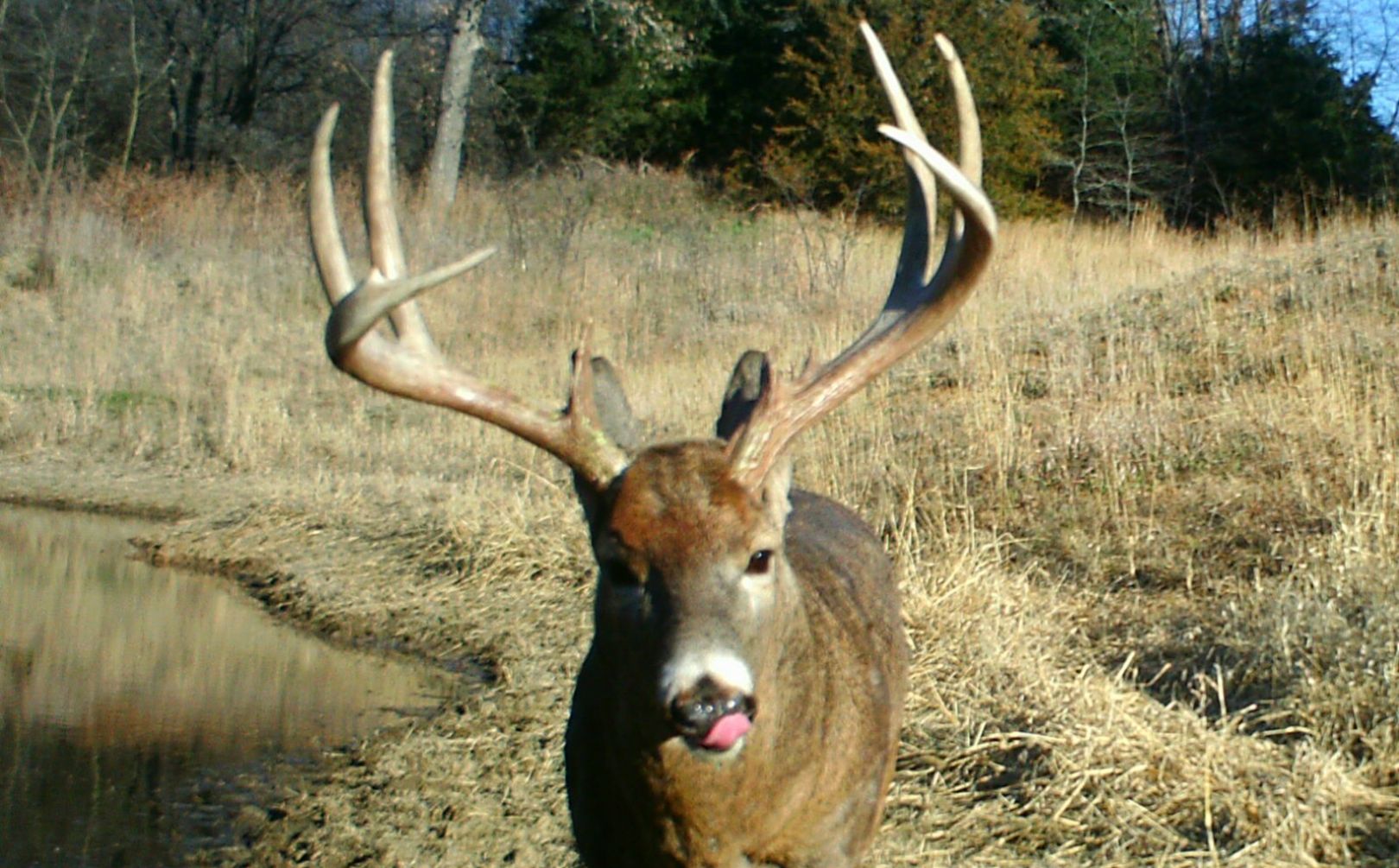
Shed hunting starts and ends, food plots are painfully established and maintained, and finally the bow season begins with the full anticipation of the approaching rut! But then something strange happens that you have most likely all experienced: The rut flies by so fast it is seemingly over before it begins. Often, the entire whitetail rut is a rollercoaster of emotions and success, mixed with various tactics based sometimes on experience, sometimes on myth, and often within an ever decreasing hourglass of shrinking opportunity. It's seems like just yesterday we were looking for our first sheds of the year, and that now we are in the middle of bowhunting the phases of the rut, instead of merely anticipating them. Where did the time go?
While bowhunting the phases of the rut, the tactics need to change as each phase passes us by. Why? Because the deer herd changes, and it changes quickly with each and every passing day. There are 3 distinct phases of the primary rut that not only reflect and define what activities mature bucks are participating in, but even more importantly...which tactics you should be using for bowhunting the phases of the rut.
Pre-rut
Depending on where you live in the North 1/2 of the country, this period of time can vary by quite a bit! In areas like Southern WI, MN and MI the pre-rut is typically going strong, with traditional rutting behavior being kicked off following the first major cold front during the last 7-10 days of October. However, in Southern OH, IN or IL the first 7-10 days of November is most typical. Keep in mind that Pre-rut activity could be outstanding in one area, and horrible in another just a mile away! Why? Because typically, mature bucks do not need to wander during the Pre-rut. If you do not have a core, local mature buck in and around the land that you hunt, don't be suprised if the sign in the woods reflects that fact. Mature bucks leave several times more sign in the woods than immature bucks, so the sign will reflect the local population quite accurately while bowhunting during the Pre-rut phase of the rut.
Pre-rut Signs
1. An explosion of scrapes:
Scrapes will be maintained actively and aggressively until the first receptive does approach estrus. When the first does enter estrus, a mature bucks attention turns to breeding does, instead of raking trees and scratching the soil.
2. Giant rubs:
This is the time of the year when a scattering of some of the largest, and most aggressie rubs are produced by the local giants. Again, for several days bucks spend a lot of time preparing for the rut, instead of participating in the rut, so what do they have left to do? They create sign, and often a lot of sign!
3. Buck vocalization:
I heard my first snort-wheezes following a cold front on 10/22 when two local giants were banging antlers in the CRP. Grunting, snort wheezing and growls that were non-existent just a few days prior, often become common when the Pre-rut kicks into full gear.
Pre-Rut Bowhunting Tactics
1. Morning bedding areas:
Mature bucks may already be back in their core daytime bedding areas, still in the food sources or somewhere between, but if the conditions are calm and cold, they will be moving! I love to take stand positions that allow me to relate to mature buck bedding areas. This could mean that I climb a tree on the downwind side of a bedding area, between bedding areas, or on the way into a bedding area, but if it relates to a mature buck bedding area-I will be there! Because does have not entered estrus yet, there is no need for giant bucks to range far and wide, but they can't help but to litter their daytime bedding area with a collection of rubs and scrapes. By avoiding deer on the way into your stand location either by going around food sources or bedding areas, you may be all set for a great encounter with a giant before the rut even kicks into high gear!
2. Evening feeding movements:
A lot of bucks fall to well-placed stands designed to take advantage of Pre-rut evening movements. Where a mature buck feeds during his dinnertime movement is fairly easy to predict and if you know where he prefers to spend his daytime hours...his travel pattern is set! By adding a waterhole on a dry parcel you can help to pinpoint a buck's movements, but my personal tactic is to hunt the side of an entire movement that includes: Mature buck bedding, thick and secure travel routes, hidden staging area, and finally a major evening food source. My best luck has actually come from hunting a narrow funnel between a giant's bedding area and staging area, while being able to access the stand withough distrupting either.
3. Morning and Evening Sits:
The Pre-rut is traditionally not a period of the rut to take an all-day sit! Bucks move a bit in the morning, and a bit in the afternoon, and not much in between. Remember although this can be a great time to hunt, bucks are spending a lot more time laying down mega sign, than chasing and cruising for does. I takea lot of 3-4 hour sits in the morning, and 3-4 hour sits in the evening, but my all-day sits come later in the rut when the giants could potentially be caught cruising all day long.
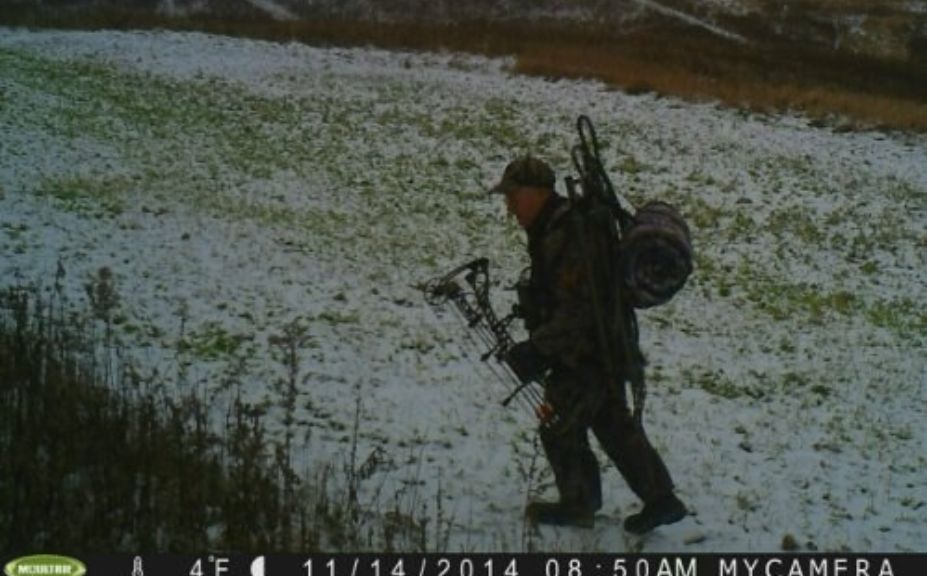
*Never underestimate the power of weather, to influence mature buck rutting behavior. Try reading about all of my cold weather rut hunting strategies in,"Whitetail Rut Weather Guide".
Peak-rut
Nothing can shut any mature buck movement down like poor weather, including strong storms, high temperatures, and high winds. The entire rut can appear to be a rollercoaster, fluctuation drastically from one year to the next. If you are looking to give credit to something for a great rut...focus on the weather. If you want to cast the blame for a poor rut...focus on the weather. The Peak-rut begins when an appreciable number of does enter the estrus cycle. However, whether you are hunting the Pre, Peak or Post rut, the intensity of your hunt will depend on the weather, leaving you with a rollercoaster of buck experiences that can vary drastically by the hour, let alone day. During some years the Peak-rut will be barely noticeable as it seemingly is so stifled by poor weather that the Pre and Post rut become one. In other years, the Pre-rut may offer the best hunting of the year, as warming patterns take over for early Novemember. But weather asside (because does enter estrus regardless of the weather, moon, etc) the Peak-rut begins when the does are ready, and this means a completely different focus by mature bucks.
Peak-rut Signs
1. Leaf-filled scrapes:
Why make scrapes and rubs when you can chase receptive does? Well, most of the bucks don't anymore and when leaves fill the once giant, perfectly manicured patches of soil...the Peak-rut has begun.
2. The cameras don't lie:
What a difference just a few days can make! Giants start showing up on game cams during the day, new rubs and scrapes stop popping up in the woods, and the hunting can actually take a dive. The dreaded "lock down" can happen literally overnight, as mature bucks find receptive does in their own backyard fairly easily. It can actually appear that the rut is poor, when instead the big boys are just with their ladies for a few days at a time, while finding their first or 2nd does quite easily.
3. Hunters fill the woods:
It's time, hunters have taken their vacations months in advance, and just about anyone who likes to hunt mature bucks is in the woods.
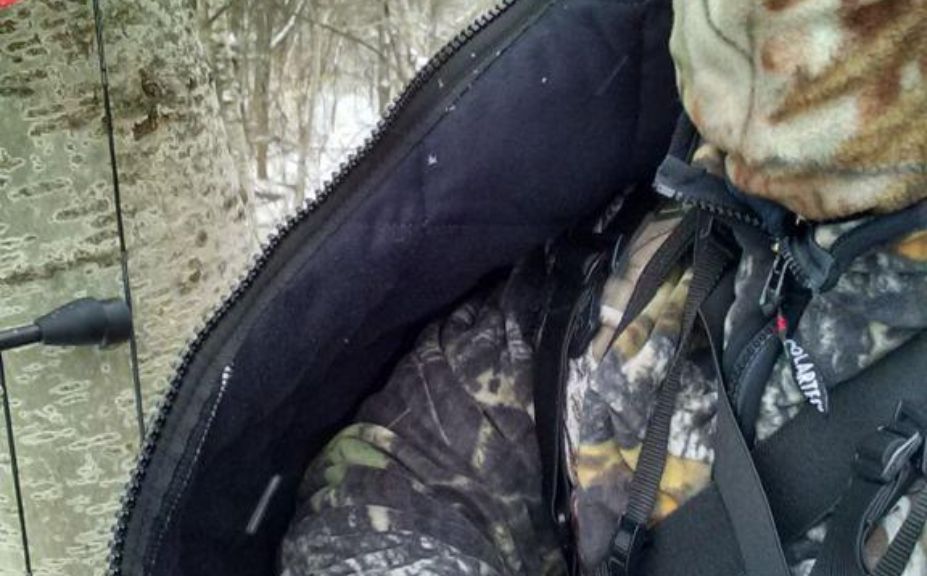
*All day sits in the stand can be extremely cold! As a "cold tested" MI and WI hunter, the best tips that I can offer for staying warm in the deer stand can be found by reading, "Staying Warm in the Deer Stand".
Peak-rut Bowhunting Tactics
1. The all day sit
Particularly, when scraping activity has been virtually non-existent for several days, it may be time to sit all day. But in the same stand? Deer are still traveling to bedding areas in the morning, and food sources in the evening so unless you have a stand that relates to both, you may need to copy what I did yesterday, and just move 100 yards to another stand in the afternoon. Also, because deer are typically traveling 1 direction in the morning, and the opposite direction in the evening, the need for alternate stand locations for different wind directions may be important.
2. Funnels, Funnels, and more Funnels:
A mature buck can wander anywhere during the rut. His movements may appear far, and they may appear random but if you can take advantage of where all of those travels come together, constricted by the topography of the land or habitat, you can often find the perfect mid-rut cruising stand! This stand maybe a very poor choice during the Pre-rut, because bucks just aren't cruising great distances. However, when bucks are losing weight and adding the miles, finding a high quality funnel rimmed with heavy cover and between hotspots of food, water or bedding cover is an outstanding tactic to employ every year. Just don't be fooled into thinking that a great Peak or Post-rut stand, will also be a great Pre-rut stand.
Post-rut
After a week to 10 days of "hit or miss" Peak-rut hunting due to the rollercoaster of wheather's whims and the randomness of doe receptiveness, there is yet another change in the whitetail bowhunting woods. As the number of does entering estrus drastically decreases, and bucks are forced to wander far and wide, the Post-rut is beginning to take over.
Post-rut signs
1. Random scraping activity:
Receptive does are tough to find, so what's a buck to do? Turn his focus back towards laying down a few serious rubs and scrapes. The interesting aspect of these small explosions of sign is that they may be a mile or more from where the same buck created his first substantial amount of sign during the Pre-rut. Have you ever seen seemingly misplaced sign pop-up in unexpected locations during the Post-rut? I witness it every year, and it's reflective of the wanderings of Post-rut mature bucks.
2. New rubs:
The scraping and rubbing activity often goes hand-in-hand. New sign often is created when re-located bucks (relocated by food, cover, hunting pressure, does) begin to establish themselves in a new area while looking for their last doe or two. But it also happens later during the December secondary rut, and it explains why during late winter or spring scouting expeditions you may find sign from rutting activity that just wasn't reflected during the October and November bow or gun seasons.
3. A decrease in hunter numbers:
Vacations are used and the weather is turning colder! The woods can finally settle down into more predictable patterns with decreased hunting pressure. This is a great time to take advantage of a long-range cruiser's temporary movements on the land that you hunt, before he returns to calmer pastures back in his core, home range.
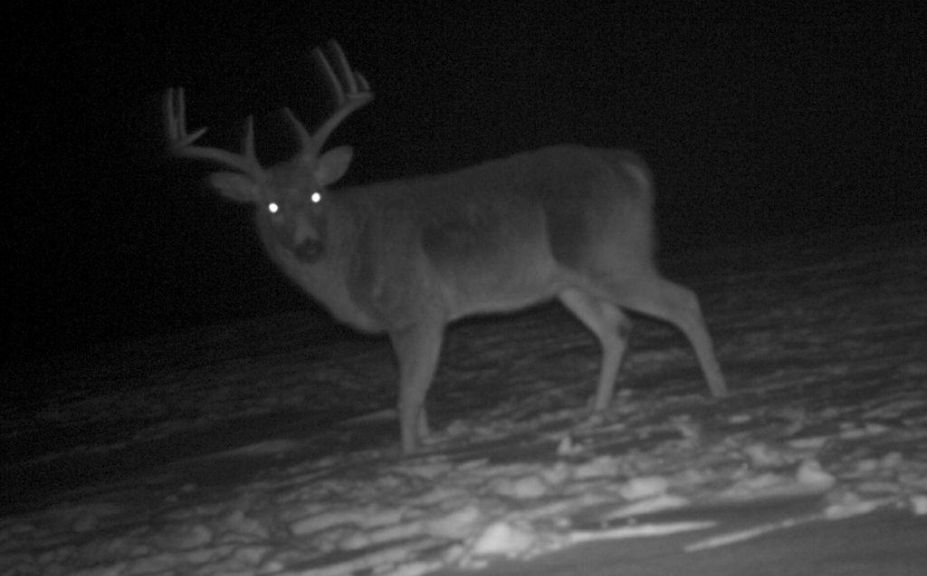
*Do you need a complete guide for hunting during the post rut? Try reading, "Late Season Whitetails"
Post-rut Bowhunting Tactics
1. Following the does:
Where do does bed on the land that you hunt? Where do does feed on the land that you hunt? It's a safe bet that if your stand locations relate to doe feeding and bedding movements that you will find the remaining remnants of mature buck rutting urges. And you may locate a mature buck or two from a mile away or more! Imagine the nightly wanderings of a neighborhood giant. Under the cover of darkness he moves a great distance, possibly to an area he frequented during the Summer months, and then he stays. He stays, because he finds a small doe family group herd that has a potential receptive doe or two to offer, possibly even a late estrus yearling doe born the previous year.
2. Again...the funnels!:
The same all-day sits on the funnel of your choice can be key during the Post-rut, when bucks are wandering far and wide. I personally like to place a premium on funnels that are directly located between two high quality doe family group bedding areas. If the area is thick, unpressured and defined by exactly how a buck will move through the area...even better! A highly defined quality funnel should allow you to use both a variety of accesses to approach your stand, as well as multiple trees for differing wind choices.
3. All-day, Any-day:
Which offers a better sit during the Post-rut, the morning or evening hours? I personally say, "Both" because you just never know when a mature buck will come wandering through...and he might not either! The rutting urges are unpredictable and random, in particulard during the Post-rut when it's possible to kill a giant you have never laid eyes on.
4. Keep it cold!:
If you are potentially targeting a monster from a great distance away, it had better be cold. I work out occasionally (way to occassionally, unfortunately!) but if I choose to take a 20 mile bike ride through the hills of Southwest WI, I can't stand to do it when it's 90 degrees or more! Even 80 degrees is a little warm, but it's safe to say I certainly have a comfort range for a long distance ride, hike or run. I have experienced it is the exact same with a mature buck. Can a mature buck cruise a mile when it's 80 degrees? Sure! Will he? I am not so sure about that. What aboout 70 degrees, or 60...even 50 degrees? Years of game cam pics of my clients, friends and myself have shown that a huge majority of our daytime mature buck pictures have been taken when the temperatures is 50 degrees or less. What about you? And the same can be said for high winds, and extreme weather patterns, meaning: The better the conditions, the more bucks will travel. By picking the premium weather related conditions to hunt during, I believe that level of your success rate will follow.
Conclusion
It seems so far away, but in seemingly the blink of an eye it's over for another 11 months. I believe that if you match your hunting tactics to the conditions of the rut you can optimize your level of success for the given amount of time. The time is short...are you prepared to take advantage of the highest number of potential mature buck opportunities while bowhunting the phases of the rut?
